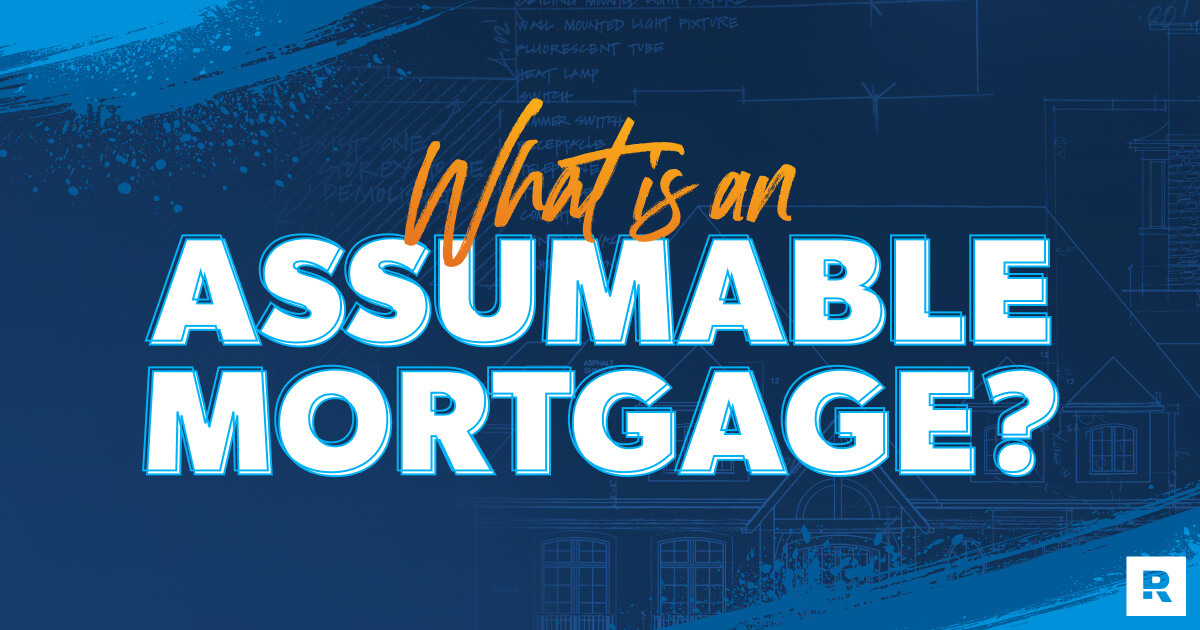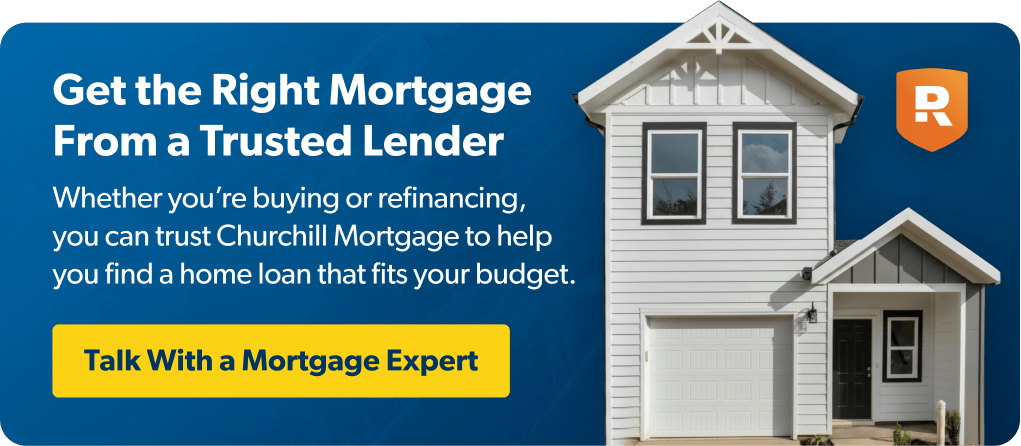
There’s a new kid trending on the real-estate block, and it’s not some kind of risky “hack”—unlike a lot of the bonkers advice I’ve seen on the internet. (No, you shouldn’t pay off your mortgage by writing checks to yourself and using a credit card. I still don’t fully understand that one.)
I’m talking about assumable mortgages, which can potentially get you a crazy low, 2020-era interest rate on a home.
But before you get too excited, allow me burst your new home search bubble real quick. Because chasing an assumable mortgage is not worth it. They take too long, cost too much and force you to jump through way too many hoops.
To prove my point, let’s walk through what an assumable mortgage is, how it works and why it’s not much more than a buzzword for real estate gurus on TikTok trying to get clicks and views.
Key Takeaways
- An assumable mortgage allows you to take over the seller’s mortgage and interest rate when buying a house.
- While mortgage assumptions can help you save on interest, they take a long time and require a huge down payment.
- The only mortgages eligible for assumption are FHA, VA and USDA loans—all of which have some problems.
What Is an Assumable Mortgage?
A mortgage assumption is when you buy a house and, instead of going to get a brand-new mortgage, you take over the seller’s mortgage. In other words, you assume their mortgage. (The marketing team really nailed it in that brainstorm.)
Find a Mortgage Lender You Can Trust!
Now, there’s one big reason assumable mortgages seem so attractive these days: interest rates.
When mortgage interest rates are high, home ownership can be significantly more expensive. And currently, rates are the highest we’ve seen in over 20 years. But just a few years back in 2020, interest rates were the lowest they’ve ever been in the history of mankind.1 (Let’s be honest, we were all hitting a record low in 2020.)
That’s why assumable mortgages are all the rage right now. Because, when you buy a house and assume the seller’s mortgage, you also assume their interest rate—which could mean serious savings for the buyer on their monthly payment. Buyers also pay significantly less in closing costs with assumable mortgages, which means even more savings.
How Does an Assumable Mortgage Work?
Mortgage assumptions take three major steps. And let me put some extra emphasis on the word “major,” because even though these steps seem simple at first glance, they can be a huge hassle.
Let’s break them down so you can see what I mean.
1. Get the seller’s permission.
The first step to assuming a mortgage is getting the seller’s permission, which can be tough for a couple reasons.
For starters, allowing a mortgage assumption often carries some financial risk. That’s because, until the buyer makes payments for a full year, the mortgage will still affect the seller’s debt-to-income ratio—potentially keeping them from getting a new mortgage when they move.
But the biggest reason sellers can be hesitant to greenlight a mortgage assumption? They take a long time. We’re talking two to four months if you’re lucky, and up to six months on the slow end.
Oh, and good luck finding a seller who’s willing to wait six months for their house to close.
2. Work with the lender and fill out paperwork.
Step two in the assumable mortgage process is to work with the seller’s loan servicer and fill out a whole lot of paperwork. If you’re wondering why these puppies take so long, this is it.
See, mortgage companies would rather you open a new mortgage with a higher interest rate—because that means more money in their pockets. So, there’s no real incentive for them to bend over backward and work overtime to make a mortgage assumption easy for you.
Instead, there’s a good chance you’ll run into some grade A feet-dragging. Plus, you’ll likely have to handle a lot of the communication through snail mail (which should be reserved for birthday cards from grandma and returning regrettable Amazon purchases).
3. Make your down payment.
Finally, you’ll need to make a huge down payment before getting an assumable mortgage.
Now, you should always make a strong down payment when buying a house. But with mortgage assumptions, you’ll need enough cash to cover all the seller’s equity—and that number can be astronomical.
Here’s an example: Let’s say the Millers bought a house in July 2021 for the median home price of $379,000.2 They used a 30-year FHA loan with a 2.78% interest rate, the average back in those days, and made the minimum 3.5% down payment.3
Now, after three years of appreciation, the Millers’ home is worth $445,000. If you wanted to buy it with a mortgage assumption, you’d need enough cash to cover . . .
- Their down payment ($13,265)
- Everything they’ve paid toward their mortgage principal ($24,435)
- And the house’s increase in value ($66,000)
Bringing the grand total to . . . $103,700. Sheesh.
And here’s the deal: A situation like that is essentially a best-case scenario, since the sellers only bought their house three years ago and took advantage of the absolute lowest interest rate. When things don’t line up so perfectly with an assumption, it can easily cost you over $200,000.
But George, I’ll just get a second mortgage to cover that amount! Not so fast, bucko.
It’s almost impossible to get a second mortgage to cover the difference on an assumption. Most lenders won’t even go near them, and the ones that will often charge higher interest rates—costing you even more money in the long run. Not to mention that negates the whole goal of . . . you know, a lower interest rate.
Want More Expert Real Estate Advice?
Sign up for our newsletter! It’s packed with practical tips to help you tackle the housing market and buy or sell your home with confidence—delivered straight to your inbox twice a month!
What Types of Mortgages Are Assumable?
If you haven’t already gotten the picture that getting an assumable mortgage can be difficult, here’s another nugget for you: You can’t assume a conventional home loan, which is the only type of mortgage I recommend.
Instead, you can only assume these three types of government-backed loans, each of which comes with its own unique problems.
- Federal Housing Administration (FHA) loans: Assuming an FHA loan will likely put you on the hook to pay 0.55% of your remaining loan balance annually as a mortgage insurance premium (MIP) for at least 10 years.4
- Veterans Affairs (VA) loans: You don’t have to be a veteran to assume a VA loan, but you will have to pay 0.5% of the mortgage balance as a funding fee.5
- United States Department of Agriculture (USDA) loans: USDA loan assumptions don’t require any extra fees or premiums, but they’re also exceedingly rare. That’s because a home is usually only eligible for a USDA loan in the first place if it’s in a rural area with a population of less than 2,500.6
Not only are these types of mortgages loaded up with fees, but they also only account for about 22% of existing home loans.7 That means cutting out three-fourths of the real estate market before you even start house hunting. Bad plan.
You always want to keep your options open when looking for a home, because that’s the best way to find a good fit. Assumable mortgages accomplish the exact opposite.
Pros and Cons of Assumable Mortgages
Okay, we’ve gone over a lot of info on mortgage assumptions. Here’s a quick recap:
Assumable Mortgage Pros
- You can get a lower interest rate. This is the major selling point of assumable mortgages. They’re the only way to get a 3% mortgage rate these days, which can knock a ton off your monthly payments.
- You’ll save on closing costs. Because they’re not getting a brand-new mortgage, folks who use an assumable mortgage pay very few closing costs.
- They help a seller’s listing stand out. Sellers know folks will start lining up around the block when their listing mentions the potential of a 3% mortgage.
Assumable Mortgage Cons
- Assumable mortgages cost a ton. An assumable mortgage can easily cost between $150,000 and $250,000—money you’ll need in cash. That’s big money, no whammies.
- They take a long time. Closing on a house with a new mortgage typically takes 30–60 days, while mortgage assumptions can take three times as long.
- You limit your options. If you’re dead set on an assumable mortgage, then you won’t have much say in which houses make your shortlist—you’ll be stuck with the few available options.
Is It a Good Idea to Assume a Mortgage?
Hopefully, you can see by now why only around 6,400 assumptions got processed in 2023—compared to the millions of new mortgages that were originated.8,9 The whole process is just way too complicated and expensive.
But I’ve got good news! You can absolutely afford a house without a Hail Mary mortgage—just follow our mortgage-loan do’s and don’ts and steer clear of the mess.. There are other, better ways to lower your monthly payment—like increasing your down payment and choosing an affordable area to live in.
You can also save money by moving some of your “needs” into the “want” column. For example, if you can’t afford your dream single-family home in the exact location you want, a townhouse a little further out may fit your budget. That’s okay!
At the end of the day, you just need to be patient. I checked the Constitution, and there’s nothing in there about having to own your dream home by 30 years old. You get to choose the pace of your race, so make the jump into homeownership when it’s right for you.
Frequently Asked Questions
-
How much does a mortgage assumption cost?
-
Assumable mortgages require a down payment that’s big enough to cover all the seller’s equity, including appreciation. Because of that, mortgage assumptions can easily cost between $150,000 and $250,000. And since second mortgages to cover assumptions are hard to come by, you’ll need to pay all that money in cash.
-
What are the requirements to assume a mortgage?
-
The main requirements to assume a mortgage are getting permission from the seller and making a big enough down payment to cover their equity. You’ll also need to find a home with an existing FHA, VA or USDA loan.
-
What is the mortgage assumption process?
-
The mortgage assumption process involves getting permission from a home seller to assume their mortgage, filling out paperwork with the seller’s loan servicer, and making a large down payment. Because there are so many hoops to jump through within each of those steps, the assumption process can take anywhere from 60 days to six months.
Did you find this article helpful? Share it!

We Hear You!
We’re considering adding the ability to save articles to your Ramsey account.




